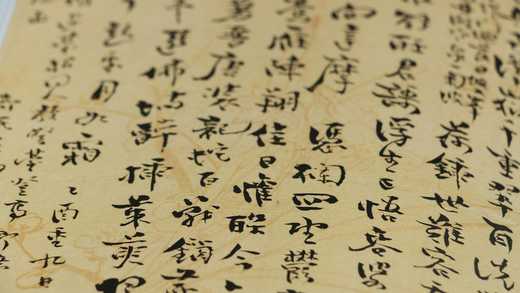How Many Letters Are There In The Chinese Alphabet?
 Written byZoe Mei
Written byZoe Mei- Read time3 mins
- Comments0

Chinese doesn’t have letters, nor does it have an alphabet.
Instead, it has characters which are called Hanzi in Chinese.
It’s also incorrect to describe Chinese characters as hieroglyphs (like ancient Egyptian).
Rather, Chinese characters are what’s called logograms.
How many Chinese characters are there?
It’s not technically possible to give an exact Chinese character count, but most official sources number over 50,000 individual Chinese characters.
The Zhonghua Zihai dictionary contains 85,568 Chinese characters, while the Yìtǐzì Zìdiǎn dictionary lists 106,230 characters.
It’s clearly not a settled issue as the number can’t be agreed on.
In addition to native counts, there also tens of thousands of characters used in neighboring languages like Japanese and Korean (who also make use of Chinese Hanzi).
Like other languages, Chinese is evolving too so new characters are often finding their way into use.
How many Chinese characters do you need to ace the HSK or read a piece of literature?
Even though there are potentially hundreds of thousands of Chinese characters, you certainly don’t need to learn that many.
In fact, only a very small amount of characters are necessary to achieve fluency. Highly educated Chinese people generally know around 8,000 characters which is considered quite a lot.
To ace the HSK proficiency test (highest level), you only need 2,600 characters.
In order to read a newspaper (which contains advanced vocabulary), you need around 3,500 Chinese characters under your belt.
As you can see, this is nowhere near the 50,000+ or 100,000+ mark.
Think of Chinese characters as morphemes rather than letters
A logogram is a written character that represents a single morpheme, or unit of meaning.
What is a morpheme and how do they work in Chinese?
A morpheme is the smallest meaningful lexical chunk in a language.
This can be a complete word (e.g. ‘dog’) or part of a word (the ‘s’ on the end of ‘dogs’). The only criteria is that it has meaning on its own.
For example, the word unfathomable contains 3 morphemes: un + fathom + able.
An example in Chinese is the word for appetite.
In Chinese, this word is 食欲. It’s made up of 2 morphemes which are individual words:
- 食 (food)
- 欲 (desire)
Are Chinese characters difficult to learn?
Believe it or not, learning Chinese characters is no different to learning English letters.
In both cases, you are simply learning to recognize an image or outline - a picture.
The difference is that Chinese characters can get quite complex and can combine with other characters. The real challenge in learning Chinese Hanzi is the sheer number of them (rather than learning 26, you’re learning thousands).
Over time and through repeated exposure, you’ll learn to recognize the pictures at immediate glance without even having to think about it.
Chinese doesn’t have an alphabet, but there is a romanized alphabet
While there’s no native Chinese alphabet per se (no a-z Chinese letters), there is a romanized alphabet used in its place by foreign students called pinyin.
Pinyin uses the English alphabet with diacritics to represent Chinese tones.
This is not used by Chinese people generally but is typically used as a learning device for new students of Chinese who are learning to read.
Like English, Chinese pinyin contains 26 letters.
 Grab the link to this article
Grab the link to this article